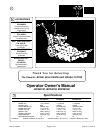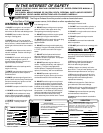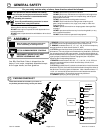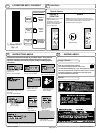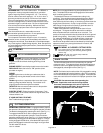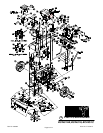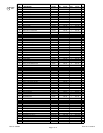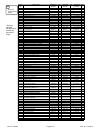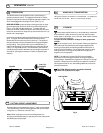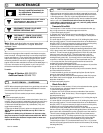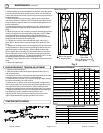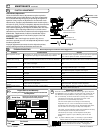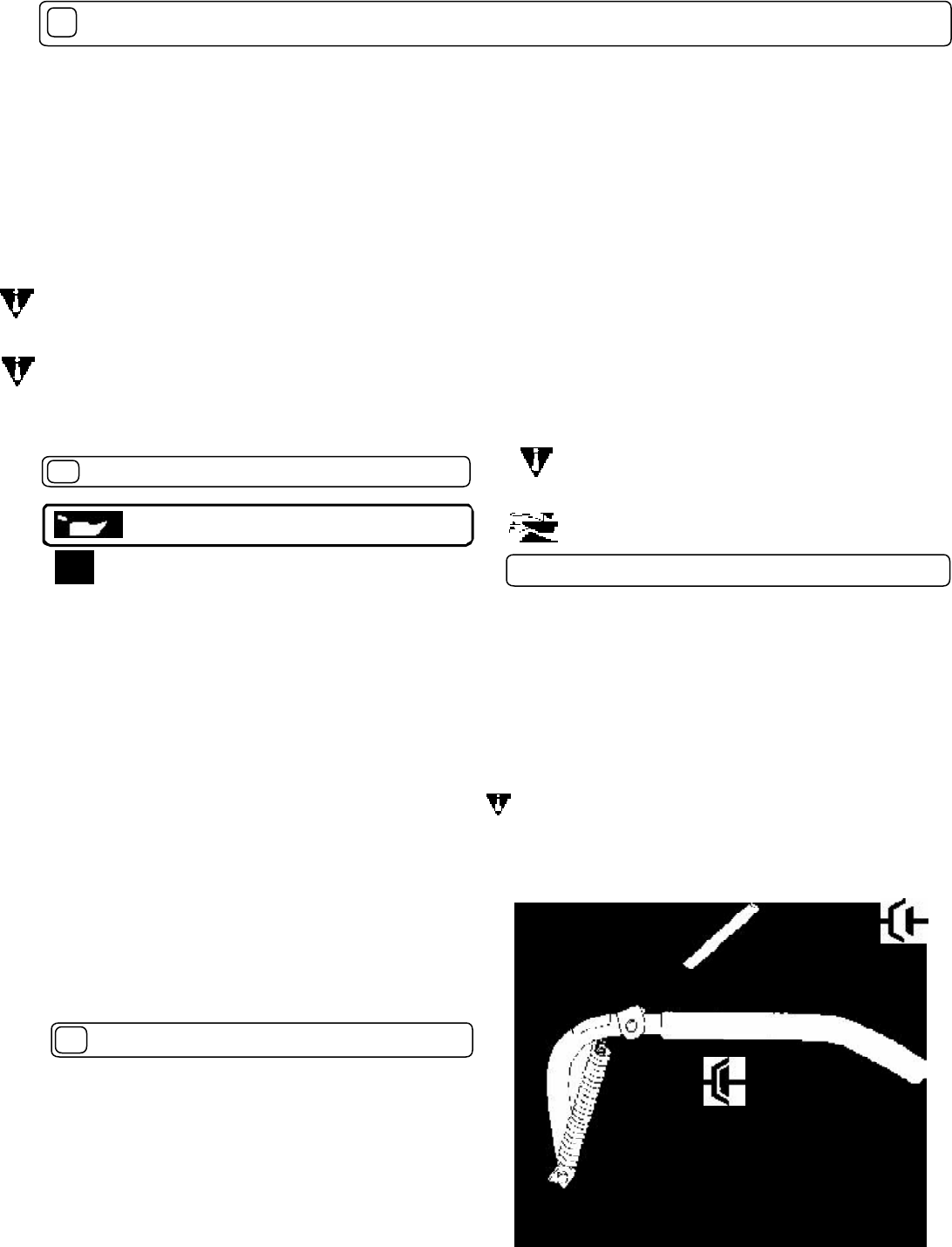
Part No. 500264 Form No. F101001A
ENGINE: See engine manufacturer’s instructions
for type and amount of oil and gasoline used.
Engine must be level when checking and filling oil and
gasoline.
ENGINE SPEED: Controlled by throttle lever on the handle.
FUEL VALVE: Move fuel valve to "ON" position (when
provided on engine).
CHOKE:
Briggs engines have a choke type carburetor that is
operated by moving the throttle control to the full start
position.
Honda engines have a separate choke lever that is oper-
ated by pulling back when starting. Push it back to its
original position after the engine has started.
THROTTLE: Move remote throttle control to fast position.
Pull starting rope to start engine.
ELECTRIC START: Choke the engine if necessary. Push
and hole down on the rocker switch until engine starts, then
release switch to run.
IF YOUR UNIT FAILS TO START:
See Troubleshooting on page 12.
Page 5 of 12
GENERAL OPERATION: To engage the blade, depress
the operator's left hand control lever against operator's handle.
The blade is disengaged by releasing this lever.(See Fig. 1.1)
To engage the wheel drive, lift the operator's right hand
control lever against operator's handle. The drive is disen-
gaged by releasing this lever.(See Fig. 1.2) Ground speed can
be varied by shifting gears as described on page 9. To begin
cutting engage the blade lever, allow the blade to spin up to
speed, and engage the wheel drive to begin moving forward
into the material to be cut.
CUTTING OPERATION
PUT OIL IN ENGINE BEFORE STARTING.
OPERATION
16
16.1
STARTING
16.2
INTENDED USE: This is not a lawn mower. The BC2401 is
designed for cutting overgrown weeds, brush, and other
types of organic growth to a height of 3-1/2". The unit may
also be used to clear small saplings 1-1/2" in dia. or less. It
does not provide the cut quality of a finish cut lawn mower.
The unit is designed for use in rural areas, and should not
be used in settings where conditions require that the unit be
operated in tight or confined areas. Be sure to inspect work
area and machine before operating. Make sure that all
operators of this equipment are trained in general machine
use and safety.
Do not operate if excessive vibration occurs. If excessive
vibration occurs, shut engine off immediately and check for
damaged or worn blade, loose blade bolt, loose blade adapter
key, loose engine or lodged foreign objects. Note: See parts list
for proper blade bolt torque specifications. (See trouble shooting
section on page 12).
The Brush Cutter blade clutch is controlled by an operator
presence control. To engage the blade, depress the operator's
left hand control lever against operator's handle. The blade is
disengaged by releasing this lever.(See Fig. 1.1)
NOTE: The blade clutch must be either fully engaged for cutting
or fully disengaged to bring the blade to a stop. Do not operate
the unit with the blade clutch partially engaged. Premature belt
wear and clutch failure will result from improper operation of the
clutch.
BLADE CLUTCH
CAUTION: Use extreme care when operating the
blade. Inspect the work area for foriegn objects
that could cause damage to the unit or injure the
operator if struck by the blade. Never operate the
blade with bystanders in the work area.
Lever
Down
Engages
Clutch
Lever Up
Disengages
Clutch
Lever
Handle
Fig. 1.1
The best performance is achieved when cutting in dry
conditions. If the deck becomes choked with grass or debris
during operation, back unit off of debris allowing machine to
clear itself and continue cutting, or shut the unit off and clear the
clog by hand (See below). A drop in engine RPM or a notice-
able change in engine sound is usually a good indicator of a
clogged discharge or other interference.
Under most conditions cutting should be done in first or
second gear. Third gear should be reserved for conditions
where weeds and brush are thinned out or not as tall. The
quality of the cut produced is directly related to the unit's ground
speed during cutting. If the quality of the cut is not satisfactory
(i.e. material left standing) you should shift into a lower gear
during cutting. For improved control in confined areas, this
machine can be pushed forward or backward by releasing the
operator's clutch lever, placing the transaxle in neutral, and
pushing the machine.
CLEARING A CLOGGED CUTTING DECK:
Turn engine off and wait for blade to stop completely.
Disconnect spark plug wire. Wearing durable gloves,
remove clog.
Danger, the clog may contain sharp materials.
Reconnect spark plug wire.
Like all mechanical tools, reasonable care must
be used when operating machine. Do not operate unit
in areas where bystanders may be present.
NOTE: Do not engage blade during transport between work
sites. The blade should remain disengaged at all times when
work is not being performed.



